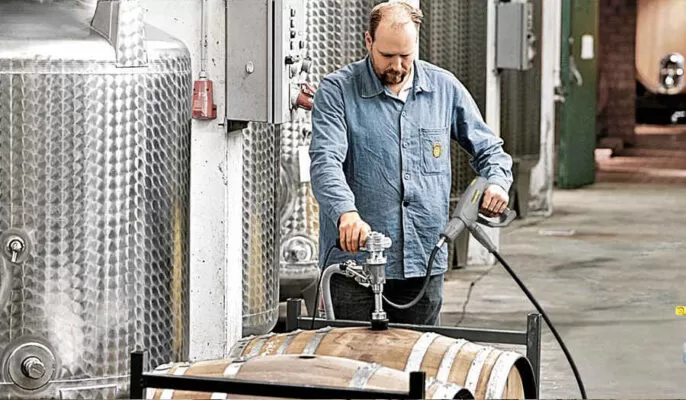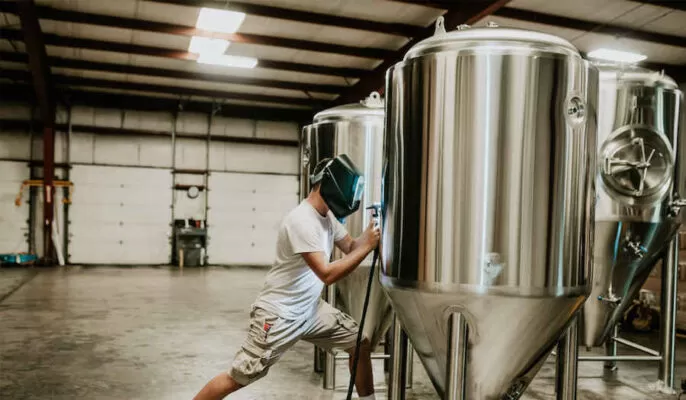Whether you brew at home or , there are best practices for keeping your fermenter clean and hygienic. Cleaning your fermenter keeps you safe and prevents beer from developing off-flavors during the brewing process. Although commonplace, cleaning and sanitizing are critical steps in the brewing process. In this guide, I’ll share how to clean and sanitize your fermenter.
How to Clean Plastic Brewing Equipment?
Cleaning plastic fermenters requires more care than glass carboys. Since plastic is porous and scratches , you’ll need to be careful to avoid using abrasive cleaning products or scrubbing . Your best bet is to use a dish wand or a brush designed for plastic bottles rather than a typical bottle brush.
No matter how you clean your equipment, it’s a smart idea to replace your plastic fermenter . Because plastic is porous, even unscratched plastic can harbor odors and bacteria over time.

What to use to clean plastic fermenters?
Several tools and chemicals are required to clean plastic fermenters. The main piece of hardware you should be looking for is a good quality dish wand or bottle brush designed for plastic items. These brushes will be made of a softer material and not have metal parts that can scratch the fermenter.
Cleaning and Sterilization
Although brewers use the terms “cleaning” and “sanitizing” , they are two separate processes.
Cleaning removes debris, dirt, grime and bacteria from the surface of the fermenter. This can be done with an all-purpose cleaning solution.
Disinfection involves the use of specialized solutions with germicidal properties.
Cleaning removes substances that can serve as hosts or fuel for living organisms such as bacteria, viruses and protozoa. The best time to clean is immediately after use. This ensures that the material in the fermenter has no chance of becoming embedded in any nooks and crannies.
If your fermenter will not be used for a while, you will need to clean it again before sterilizing to remove dust, mold and other substances that have accumulated during storage.
What happens if it is not disinfected?
Unwanted bacteria, fungi, or wild yeasts are still present in the fermenter and can cause serious problems.
- Beer becomes unsafe
- Obvious changes in the finished beer
- The aroma of beer changes
- Other compounds make beer cloudy
- Alcohol content changes
- Wild yeast consumes available sugars and stops the fermentation process
Cleaning object
Stainless steel fermentation tank, stainless steel pipe (hard pipe), hose (hose)
Cleaning Materials/Tools
- Safety equipment
- Pump with recirculation pipe (CIP skid mounted, if available)
- Clean water
- The heat source for heating water
- Citric acid
- Dilute sodium hydroxide
- Hydrogen peroxide solution
- Phosphate, silicate, and oxidizing non-corrosive alkaline cleaners
- 75% ethanol

Cleaning requirements
- Pipeline-rated flow ≥ 5m/s
- Check whether there is garbage in the water tank or pipes, and clean it up
- Ensure that safety devices are working , such as PVRV valves on fermenters. Also check the gaskets, end caps, and valves to make sure there are no leaks and all electrical parts are working .
- Protective Measures – Protect your skin and eyes from any acid or alkali! You should wear clothing that covers your entire skin, including rubber gloves and shoes. If you don’t have one, be sure to buy it.
Cleaning process
The stainless steel tank and pipe cleaning
The first is to remove all mechanical oil, road grime, and dust, and the second is to apply a conversion coating on site when required. , we need to clean the hoses, valves, and fittings. Since there are many different methods on how to clean a tank, you can decide which procedure to follow based on your current state.
Hose cleaning
- Clean with 1% dilute sodium hydroxide at 175-195 F for 15 minutes, then rinse with water
- Container with 1% hydrogen peroxide solution, at room temperature for 120 minutes
- Do not use copper fittings or chlorine ion water to clean, otherwise, the condition of the hose will deteriorate
Cleaning of valves and fittings
When assembling and replacing, use a watering can filled with 75% ethanol to clean valves, gaskets, and fittings.
Tank outer surface
If the outside surface of the tank is dirty, you can clean the stain by hand with some detergent. Try not to damage the surface with severe scratches.




